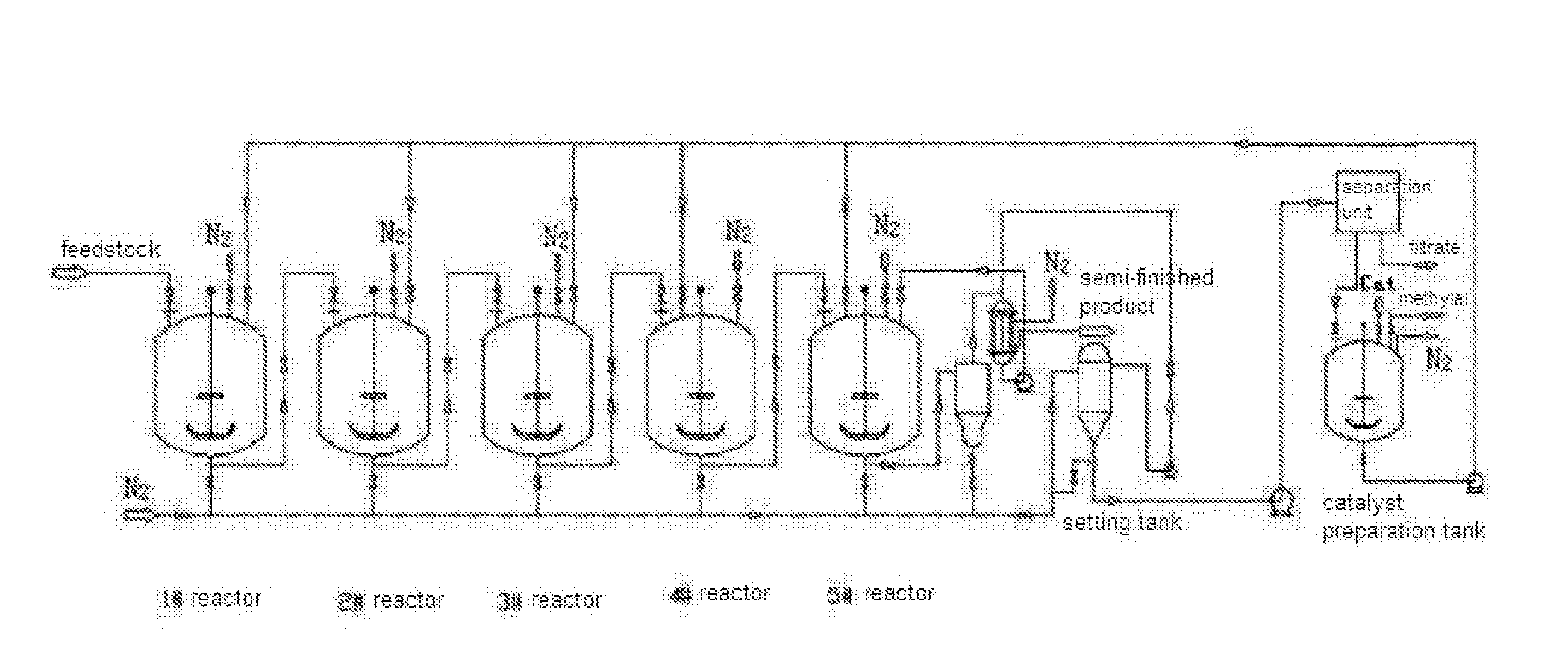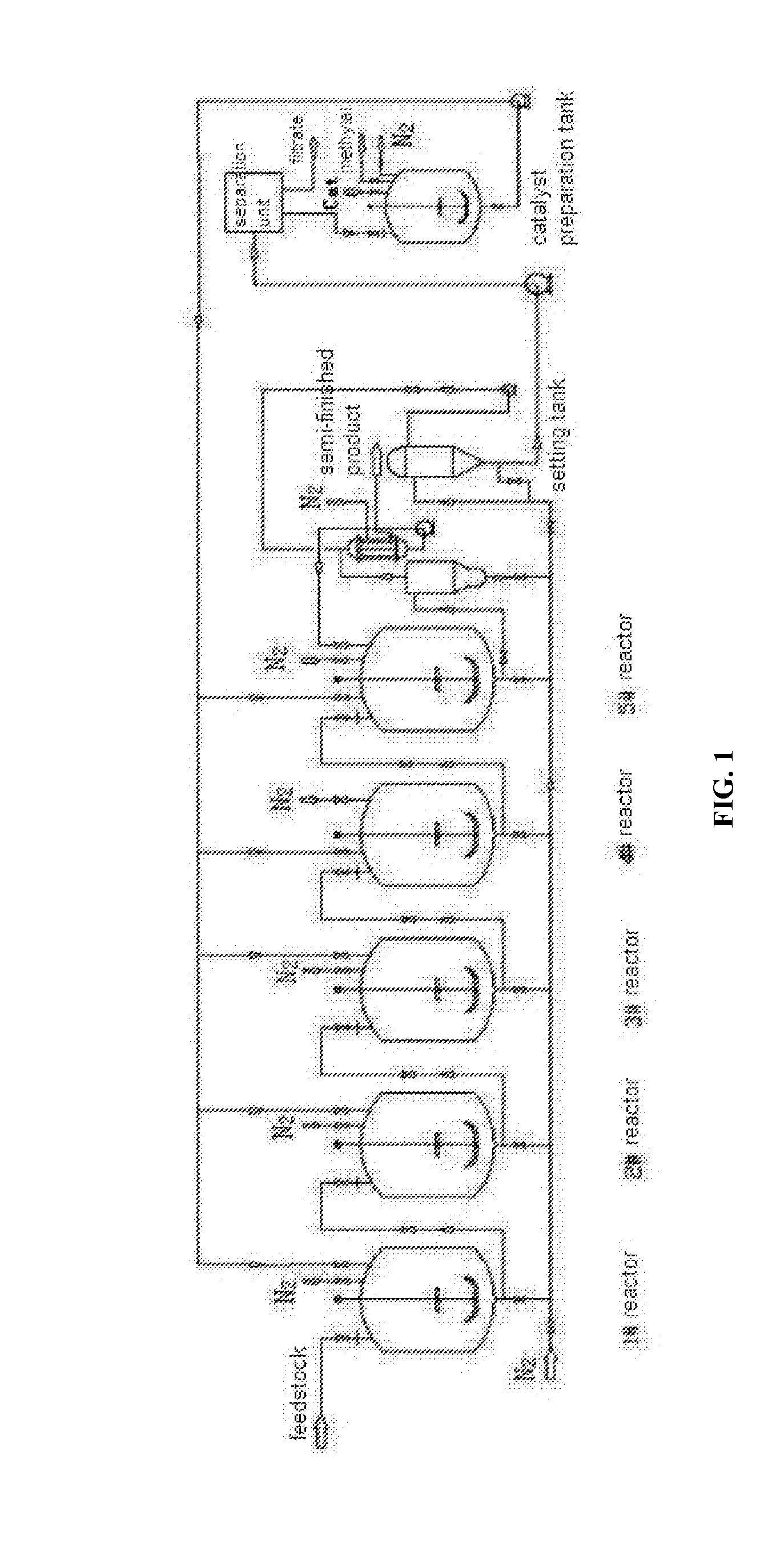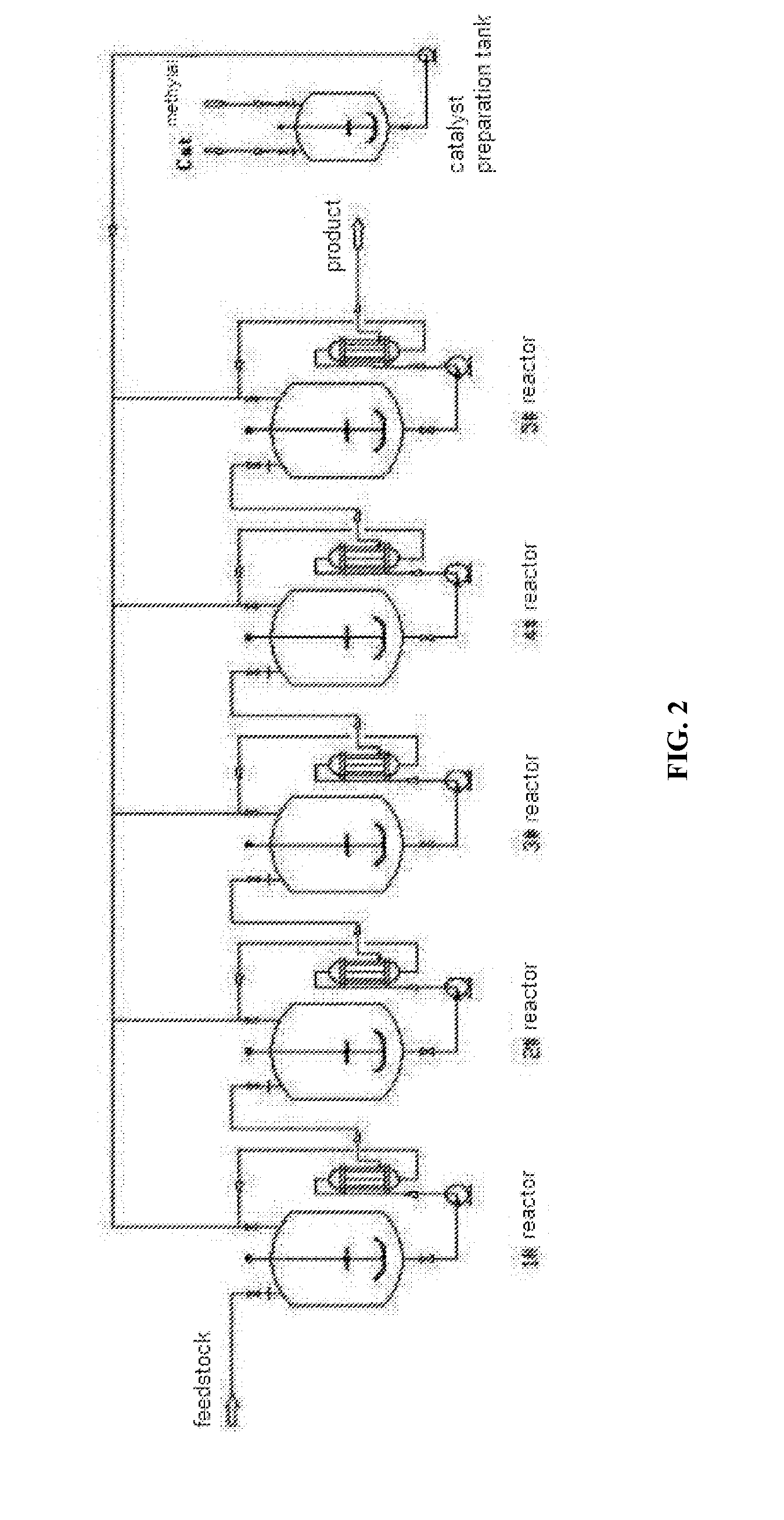Continuous reaction device for synthesizing polyoxymethylene dimethyl ethers
a technology of polyoxymethylene dimethyl ether and reaction device, which is applied in the field of energy resource chemical industry, can solve the problems of increasing the contradiction between petroleum supply and relatively fast sustaining development of economics and society, the gradual decrease of the cetane number (cn value) of diesel fuel products, and the significant increase of noxious substances discharged after combustion. , to achieve the effect of reducing the total energy consumption of the stirring mixing process, saving energy, and high mixing efficiency
- Summary
- Abstract
- Description
- Claims
- Application Information
AI Technical Summary
Benefits of technology
Problems solved by technology
Method used
Image
Examples
embodiment 1
[0046]As shown in FIG. 1, an reaction device for catalytically synthesizing polyoxymethylene dimethyl ethers from paraformaldehyde powder and methylal as feedstock comprises 5 slurry bed stirred tank reactors connected in series. Each reactor has a volume of 0.5 m3 and a volume filling coefficient of 0.8. Each reactor is provided with a half-pipe heat exchanger wound around an outside of a barrel of the reactor for serving as a heater when starting operation as well as a cooler during normal operation. The first 2-4 reactors are provided with pipe bundles or coiled pipes arranged at the inside thereof for serving as coolers during normal operation. Each reactor has a heat exchange area of about 3 m3. Each of the tank reactors is provided with an axial-flow stirring paddle having 2-6 blades per layer, to ensure sufficient mixing of the reaction mixture.
[0047]An on-line solid-liquid separation device is provided after the last one of the tank reactors, to perform the separation of the...
embodiment 2
[0051]As shown in FIG. 2, an reaction device for catalytically synthesizing polyoxymethylene dimethyl ethers from sufficiently pre-depolymerized paraformaldehyde and methylal as feedstock comprises 7 slurry bed stirred tank reactors connected in series (only the connection apparatus of the first 5 reactors are shown). The configuration, geometric dimensions, operation pattern and entire reaction conditions of each of the reactors are the same as Embodiment 1. A difference in operation pressure between two adjacent ones of the tank reactors is utilized as a driving force of filtering, to achieve transport of the reaction mixture.
[0052]An on-line solid-liquid separation device is provided outside each of the reactors, to perform the separation of the reaction mixture from the catalyst. The on-line solid-liquid separation device is a multitubular filter performing on-line cross-flow filtering. A difference in operation pressure between two adjacent ones of the reactors is utilized as a...
embodiment 3
[0055]The reaction device of this embodiment comprises 7 slurry bed stirred tank reactors which are numbered Reactor No. 1-7. Counting from the feed end, Reactors No. 1 and No. 2 are connected in series to form a Unit 1, Reactors No. 3 and No. 4 are connected in series to form a Unit 2, and the Unit 1 and Unit 2 are then connected in parallel to form a Unit 3 which is further connected in series with Reactors No. 5, No. 6 and No. 7. The reaction system and feedstock are the same as Embodiment 1, and the configuration and geometric dimensions of various reactors, operation pattern and operation conditions of each reactor are all the same as Embodiment 1.
[0056]The difference only lies in that, two halves of the total flow of feedstock is respectively fed into Reactor No. 1 and Reactor No. 3, and the mass streams flowing out of Reactor No. 2 and Reactor No. 4 are converged and then fed into Reactor No. 5 and then into Reactor No. 6 and then into Reactor No. 7 successively. After a stea...
PUM
| Property | Measurement | Unit |
|---|---|---|
| temperature | aaaaa | aaaaa |
| boiling point | aaaaa | aaaaa |
| flash point | aaaaa | aaaaa |
Abstract
Description
Claims
Application Information
 Login to View More
Login to View More - R&D
- Intellectual Property
- Life Sciences
- Materials
- Tech Scout
- Unparalleled Data Quality
- Higher Quality Content
- 60% Fewer Hallucinations
Browse by: Latest US Patents, China's latest patents, Technical Efficacy Thesaurus, Application Domain, Technology Topic, Popular Technical Reports.
© 2025 PatSnap. All rights reserved.Legal|Privacy policy|Modern Slavery Act Transparency Statement|Sitemap|About US| Contact US: help@patsnap.com



